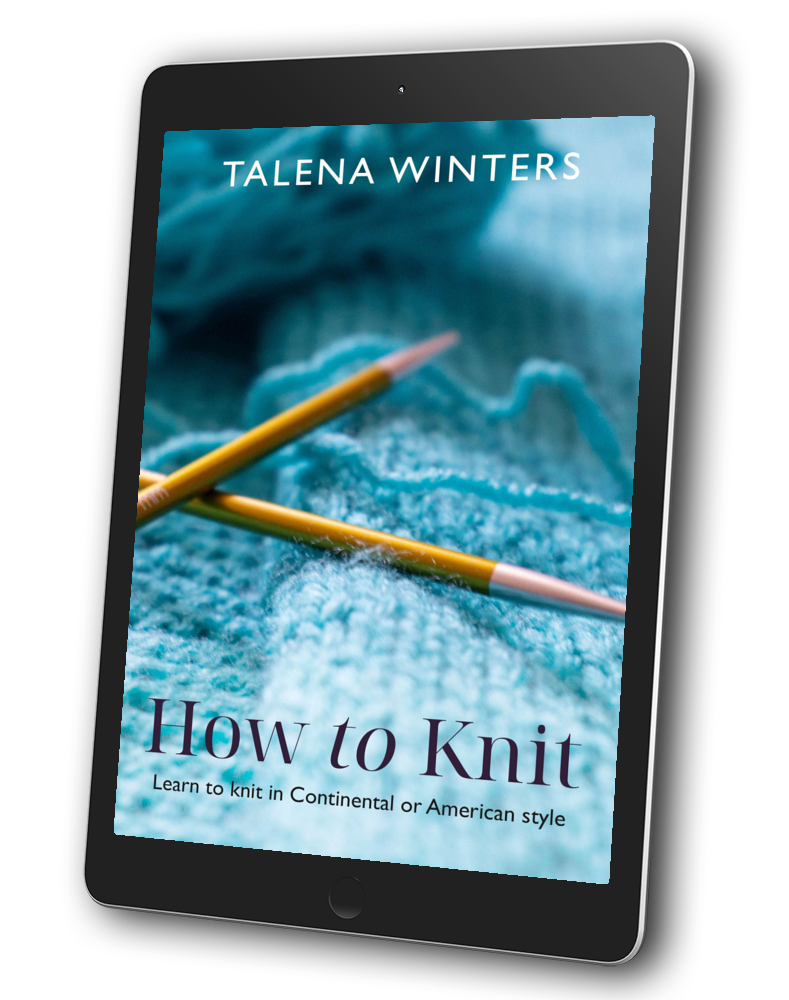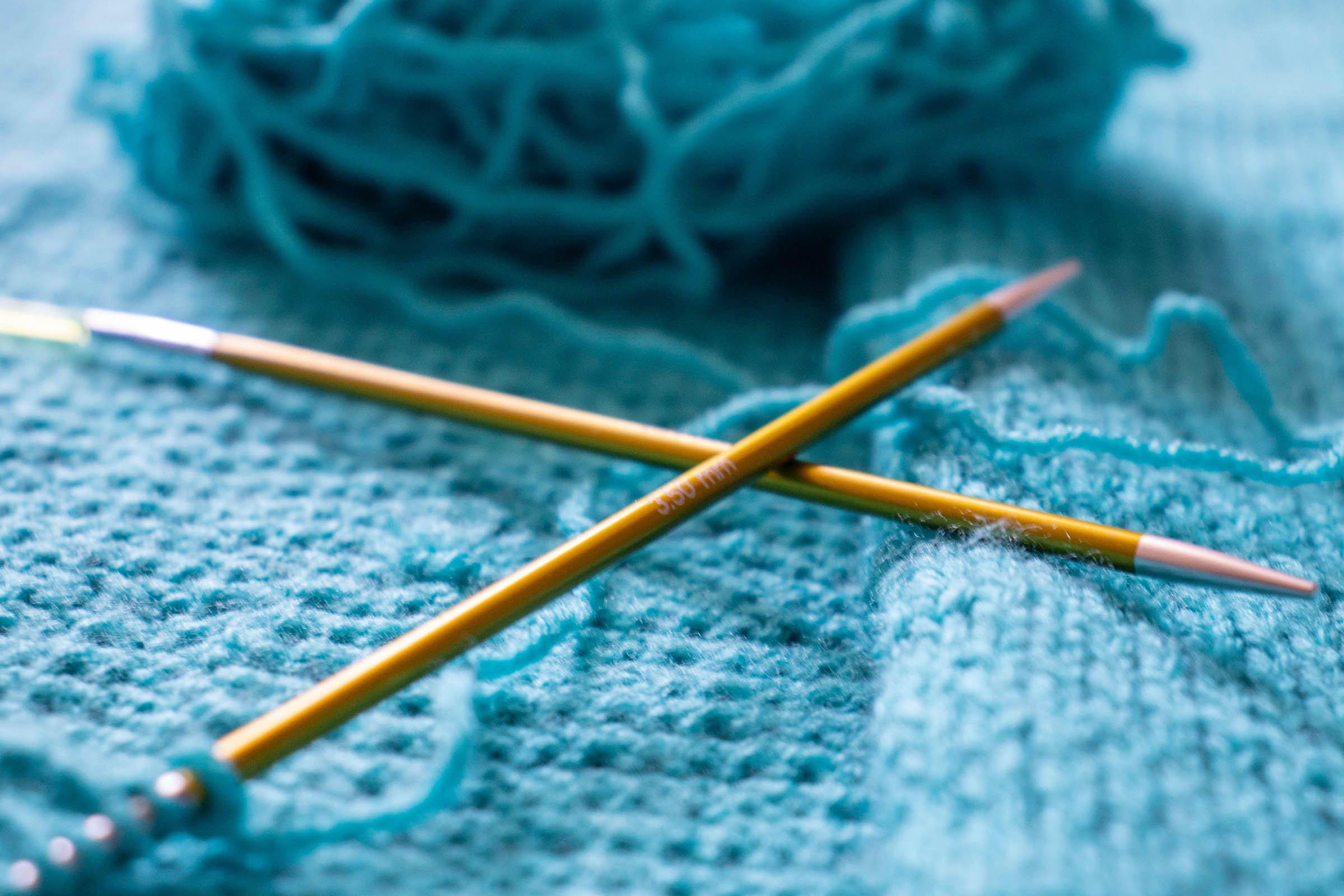
Changing Skeins
Learn how to change between skeins or balls of yarn when knitting.
Adapted from How to Knit Lesson Ten. Get the complete tutorial at the link below.

Learn how to change between skeins or balls of yarn when knitting.
Adapted from How to Knit Lesson Ten. Get the complete tutorial at the link below.
If you’re working a project larger than a baby mitten, chances are that you’ll eventually reach the end of your skein. There are several ways to handle the transition between one ball of yarn and the next that give different results.
Here are a few basics to keep in mind:
Whenever possible, avoid running out of yarn in the middle of a row. You need three-and-a-half to four times the width of the finished row in yarn length to make it all the way across. If you do not have that much yarn remaining, change yarn on the edge of your row.
If you run out of yarn partway through a row, “unknit” back to the beginning so you can change skeins properly. “Unknitting” is what I call putting the previous row’s stitches back on the non-working needle and letting the new stitches drop. There are other ways to handle this, but as a beginner, this is the best way to ensure that your finished work is neat and tidy. (Or you can use the trick in the next paragraph instead.)
If you’re working in the round, you can “tack” the new yarn in by working two or three stitches with the new yarn held double with the old yarn (keeping the tails pointing opposite directions), then continuing on with the new yarn. During the finishing stage, you may need to adjust the tension of these few stitches manually using a needle tip and some tugging. This will not work on fine or airy items.
Never knot your yarn. At the edge of a row it can cause puckering, and in the middle of a row it will always work its way to the right side of your work and look unseemly. If you need to provide slight resistance on the edge of the row when starting with a new skein, give it a single twist (a half a knot), and then untwist it when finishing so you can weave the ends in properly.
There are many brilliant methods of splicing yarn or weaving ends together that knitters have invented over the millennia. You will want to explore these as your skill improves (search “yarn joins”), but for now, go by this rule of thumb: change yarns at the beginning of a row on pieces that are knit flat*, and never knot your yarn.
*Your early projects will likely be knit flat, meaning you knit back and forth, but you can quickly graduate to knitting in the round, also known as circular knitting. Besides the tacking method given above, use that Internet search to explore other methods of introducing new skeins for seamless transitions.
Return to How to Knit index:

Hi! I’m Talena Winters (a.k.a. the Yarn Mermaid).
I started My Secret Wish Knitting in 2010 to empower and delight knitting heroes like you who want to elevate your knitting and make magic with yarn. When I’m not concocting new yarn potion recipes, I’m creating story magic as a fantasy and romance author and fiction editor (at talenawinters.com). I live with my family and pets in the Peace Country of northern Alberta, Canada, where sweater weather lasts at least nine months a year and my closest neighbours are bears and wood nymphs.
This website is a labour of love by a team of one (me!). If you found value here, please support the effort by purchasing a pattern. If you want more knitting magic, check out my community events and newsletter in the Knitting Circle. We’d love to have you!

